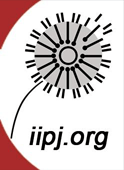Community Setting as a Determinant of Health for Indigenous Peoples Living in the Prairie Provinces of Canada: High Rates and Advanced Presentations of Tuberculosis
Abstract
Indigenous Peoples in Canada experience disproportionately high tuberculosis (TB) rates, and those living in the Prairie Provinces have the most advanced TB presentations (Health Canada, 2009). The community settings (i.e., urban centres, non-remote reserves, remote reserves, and isolated reserves) where Indigenous Peoples live can help explain high TB rates. Through qualitative description, we identify how community setting influenced Indigenous people’s experiences by (a) delaying accurate diagnoses; (b) perpetuating shame and stigma; and (c) limiting understanding of the disease. Participants living in urban centres experienced significant difficulties obtaining an accurate diagnosis. Reserve community participants feared being shamed and stigmatized. TB information had little impact on participants’ TB knowledge, regardless of where they lived. Multiple misdiagnoses (primarily among urban centre participants), being shamed for having the disease (primarily reserve community participants), and a lack of understanding of TB can all contribute to advanced presentations and high rates of the disease among Indigenous Peoples of the Prairie Provinces.
Acknowledgments
Funding for this study was provided by the Canadian Institutes of Health Research and the First Nations and Inuit Health Branch, Health Canada.
Creative Commons License

This work is licensed under a Creative Commons Attribution-Noncommercial-No Derivative Works 4.0 License.
Recommended Citation
Mayan, M. J.
,
Gokiert, R. J.
,
Robinson, T.
,
Tremblay, M.
,
Abonyi, S.
,
Morley, K.
,
Long, R.
(2019).
Community Setting as a Determinant of Health for Indigenous Peoples Living in the Prairie Provinces of Canada: High Rates and Advanced Presentations of Tuberculosis. The International Indigenous Policy Journal, 10(2)
. Retrieved from: https://ir.lib.uwo.ca/iipj/vol10/iss2/5
DOI: 10.18584/iipj.2019.10.2.5

- Citations
- Policy Citations: 1
- Citation Indexes: 3
- Usage
- Abstract Views: 218
- Downloads: 73
- Captures
- Readers: 29
